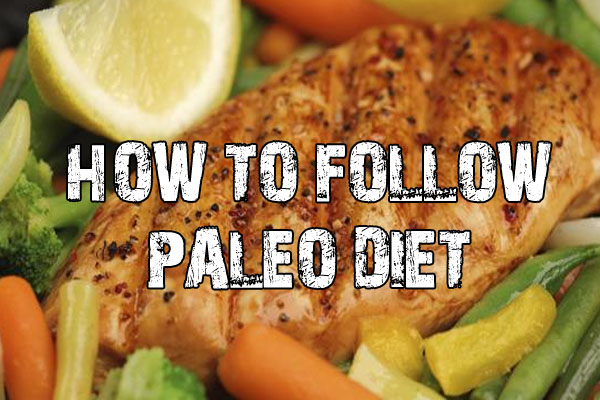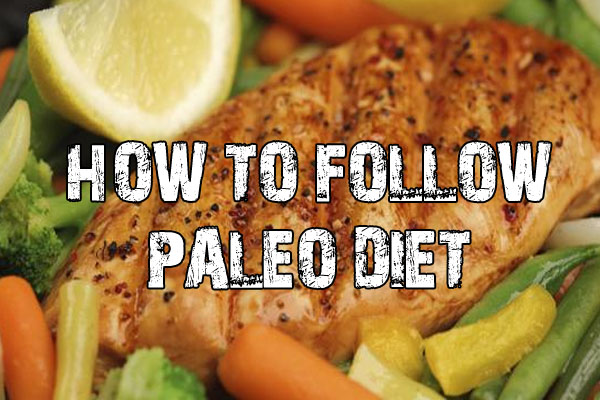
Basics of How to Follow a Paleo Diet
The paleo diet is based on the principle of following the eating habits of cavemen. Our distant ancestors during the Paleolithic era –that is, before the advent of agriculture and modern food processing techniques– had no advanced technology at their disposal. For this reason their food culture was simple and revolved around basic cooking and the consumption of mainly raw food.
The diet they followed provided them with a lot of nutrients, fuel and energy to maintain an extremely active day-to-day lifestyle.
How the Paleo Diet Differs from Other Dietary Plans
Unlike our distant ancestors, the food we consume today is mostly made using a plethora of artificial substances: additives, flavorings and preservatives. Only rarely we consume food products that are entirely natural. This habit stems from modern busy lifestyle; in the past, people took the time to go to the market more often to purchase fresh foods.
Nowadays we go to the grocery once a week, and store food in the fridge or canned goods in the pantry. Often, we buy readymade meals which we put in the microwave to prepare quickly. Little do we know that these products are loaded with preservatives damaging to our health and well-being.
People in the past dependent only on the naturally available to them food sources, and because of this they led a healthy lifestyle for many years, without heart ailments or other organ disorders being caused by their eating habits. Today’s civilized era, however, is distinct for its increased occurrences of heart-related conditions, many of which are attributed to our unhealthy ways of processing food.
The paleo diet argues that by reverting to the older, ‘‘uncivilized’’ lifestyle, we may have a fighting chance against debilitating ailments.
Modern Technology Isn’t Always Beneficial to Our Health
Man’s inventions and technology is held in high esteem and definitely offers plenty of benefits to our lives, however regarding food and eating habits as they evolved throughout the years this is debatable. More and more people nowadays recognize that the eating culture which we have adopted serves only to shorten our life span.
In the past, people lived for many years and many were recorded to have passed the mark of 100. These days, the number of people living past the century mark is decreasing, and the greatest factor behind this is our food diet and eating habits. Most food items that are produced and sold as fast food have very little, if any, health benefits. Instead, they only reduce the efficiency of some of our internal organs and overwork others, such as the kidney – which has to function beyond its normal capacity in order to flush out the toxins found in these artificial substances.
It is therefore necessary to return to past habits and practice that uncivilized eating style which granted our ancestors the gift of living a long life.
This is why the paleo diet, or ‘’caveman diet’’, exists and how it came to be. But before one starts following it and incorporates it entirely into their everyday life, they need to know a few basic things that will contribute to their knowledge of how the body works. If one’s body can easily adapt to the changes that take place when following the paleo diet, then it’s safe to pursue it. Make sure to take a complete checkup and advice from your doctor.
If they give you the green light as regards the paleo diet, then go ahead. The low-carbs and no-dairy nature of the diet is designed to make your body search for alternative energy sources than carbs, thereby reducing weight and fat.
Which Foods Are Allowed in the Paleo Diet?
Following the paleo diet is simple, because once you know the list of foods allowed in it you can easily determine what to eat and what to avoid. Meat, seafood, nuts, seeds, fruit and vegetables are all essential and highly recommended, according to the paleo diet. All you need to avoid is dairy products, whole grains and, of course, excessive salt and sugar, which are normally prohibited in almost any type of diet. Dairy and whole grains weren’t available to or consumed by cavemen, as these products required processing and food processing wasn’t yet invented.
Another rule of the paleo diet is that you should eat only when you’re hungry and try not to eat all time. Make sure you know type of fat you consume by researching the ingredients of the foods you eat. Use only olive, coconut, and almond oil, avoiding other processed oils that aren’t organic and contain additives harmful to your health.
The paleo diet can cure digestion disorders as well as heart defects, so take utmost care in choosing your food. Don’t drink or eat any of the preserved types of food, as these can harm circulation. Grains, also, have been proven to affect damage to the liver, the gut lining, and the immune system, apart from being associated with a number of other organ disorders. Drink a lot of water, as this enhances blood circulation. Following the paleo diet can be a life-changing decision, but it’s also a life-saving one.



0 comments on “Basics of How to Follow a Paleo Diet”